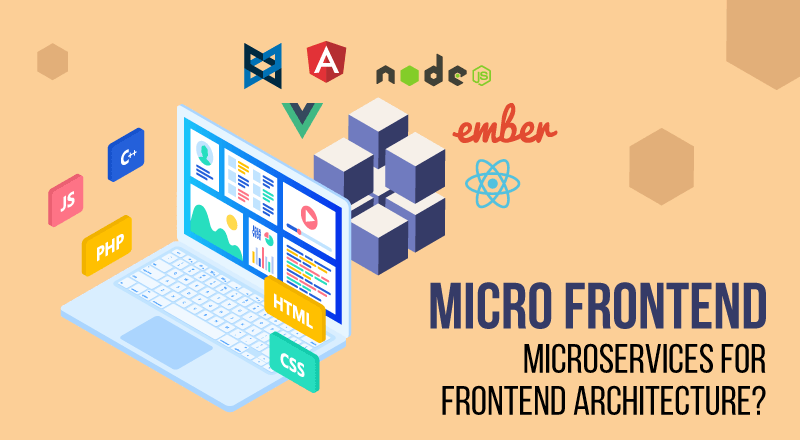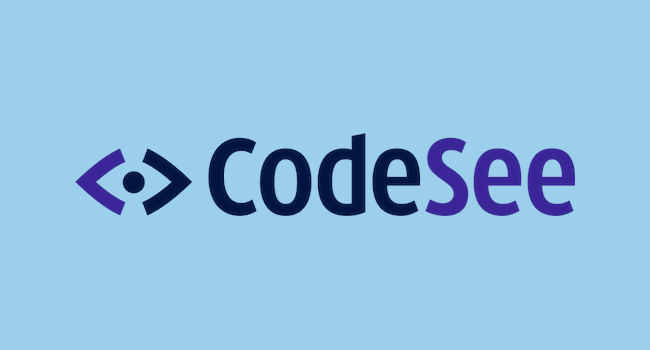Micro Frontend Architecture

The idea behind Micro Frontends is to think about a web app as a composition of
features that are owned by independent teams. Each team has a distinct area of
business it cares about and specializes in. A team is cross-functional and
develops its features end-to-end, from database to user interface. ... But why
do we need micro frontends? Let’s find out. In the Modern Era, with new web
apps, the front end is becoming bigger and bigger, and the back end is getting
less important. Most of the code is the Micro Frontend Architecture and the
Monolith approach doesn’t work for a larger web application. There needs to be a
tool for breaking it up into smaller modules that act independently. The
solution to the problem is the Micro frontend. ... It heavily depends on your
business case, whether you should or should not use micro frontends. If you have
a small project and team, micro frontend architecture is not as such required.
At the same time, large projects with distributed teams and a large number of
requests benefit a lot from building micro frontend applications. That is why
today, micro frontend architecture is widely used by many large companies, and
that is why you should opt for it too.
CodeSee Helps Developers ‘Understand the Codebase’

As a developer, you’ve likely faced one problem again and again throughout your
career: struggling to understand a new codebase. Whether it’s a lack of
documentation, or simply poorly-written and confusing code, working to
understand a codebase can take a lot of time and effort, but CodeSee aims to
help developers not only gain an initial understanding, but to continually
understand large codebases as they evolve over time. “We really are trying to
help developers to master the understanding of codebases. We do that by
visualizing their code, because we think that a picture is really worth a
thousand words, a thousand lines of code,” said CodeSee CEO and co-founder
Shanea Leven. “What we’re trying to do is really ensure that developers, with
all of the code that we have to manage out there — and our codebases have grown
exponentially over the past decade — that we can deeply understand how our code
works in an instant.” Earlier this month, CodeSee, which is still in beta,
launched OSS Port to bring its code visibility and “continuous understanding”
product to open source projects, as well as give potential contributors and
maintainers a way to find their next project.
Non-Coder to Data Scientist! 5 Inspiring Stories and Valuable Lessons

While looking for inspiring journeys I focus on people coming from a
non-traditional background. People coming from non-technology backgrounds.
People having zero coding experience. I guess this makes their story inspiring.
All those who found their success in data science were willing to learn to code.
They were not intimidated by the Kaggle notebooks that they were not able to
understand initially. They all understood that it takes time to gain knowledge
and pursued till they acquired all the required knowledge. Programming is one of
the biggest show stoppers. It is this particular skill that makes many
frustrated. It even makes them give up their passion for a career in data
science. Programming is not exactly a hard thing to learn. ... Having a growth
mindset plays a major role in data science. There are many topics to learn and
it can be overwhelming. Instead of saying, I can’t learn math, I can’t be a good
programmer, I can never understand statistics. People with a growth mindset tend
to stay positive and keep trying.
How To Stay Ahead of the Competition as an Average Programmer
Apart from getting the satisfaction of being helpful, it has multiple career
benefits too. One, I get to learn a lot more by helping others. Two,
continuously helping others builds trusted relationships within the
organization.In the software industry, your allies come to your help more than
you realize. They can return the favor during application integration, defect
resolution, challenging meetings, or even in promotion discussions. If you
know people and have helped them before, they will be happy to bail you out
from difficult situations. Hence, never hesitate to help others at your
workplace. ... Simultaneously, it might not be possible for you to be of help
to everyone. But you can justify why you are unable to help. Being arrogant or
repeatedly rejecting the requests as not your responsibility makes others
think you are not a team player. ... While working in a team environment, you
are bound to face challenges. You need to follow company policies and
processes that you might find hindering your productivity. You will have to
work with people who slow down the team’s progress due to their poor
contribution.
A real-world introduction to event-driven architecture

An event-driven architecture eliminates the need for a consumer to poll for
updates; it instead receives notifications whenever an event of interest
occurs. Decoupling the event producer and consumer components is also
advantageous to scalability because it separates the communication logic and
business logic. A publisher can avoid bottlenecks and remain unaffected if its
subscribers go offline, or if their consumption slows down. If any subscriber
has trouble keeping up with the rate of events, the event stream records them
for future retrieval. The publisher can continue to pump out notifications
without throughput limitations and with high resilience to failure. Using a
broker means that a publisher does not know its subscribers and is unaffected
if the number of interested parties scales up. Publishing to the broker offers
the event producer the opportunity to deliver notifications to a range of
consumers across different devices and platforms. Estimates suggest that 30%
of all global data consumed by 2025 will result from information exchange in
realtime.
Pros and cons of cloud infrastructure types and strategies

A multi-cloud strategy simply means that an organisation has chosen to use
multiple public cloud providers to host their environments. A hybrid cloud
approach means that a company is using a combination of on-premises
infrastructure, private cloud and public cloud — and possibly more than one of
the latter, meaning that company would be implementing a multi-cloud strategy
with a hybrid approach. At times, these terms are used interchangeably.
Companies choose a multi-cloud strategy for a multitude of reasons, not least
of which is avoiding vendor lock-in. Spreading workloads across multiple cloud
providers increases reliability, as a company is able to fail over to a
secondary provider if another provider experiences an outage. Optionality is a
huge benefit to companies who want to be able to pick and choose which
services will most seamlessly integrate into their environments, as each major
public cloud provider provides some unique services for different types of
workloads. Furthermore, when a company uses multiple public cloud providers,
it retains flexibility and can transfer workloads from one provider to
another.
Gartner: Top strategic technology trends for 2022

The first of those trends is the growth of the distributed enterprise. Driven
by the massive growth in remote and hybrid working patterns, traditional
office-centric organizations are evolving into geographically distributed
enterprises. “For every organization, from retail to education, their delivery
model has to be reconfigured to embrace distributed services,” Groombridge
said. Such operations will stress the network that supports users and
consumers alike, and businesses will need to rearchitect and redesign to
handle it. ... “Data is widely scattered in many organization and some of that
valuable data can be trapped in siloes,” Groombridge said. “Data fabrics can
provide integration and interconnectivity between multiple silos to unlock
those resources.” Groombridge added that data-fabric deployments will also
force significant network-topology readjustments and in some cases, to work
effectively, could require their own edge-networking capabilities . The result
is that the fabric will unlock data that can be used by AI and analytics
platforms to support new applications bring about business innovations more
quickly, Groombridge said.
BlackMatter Ransomware Defense: Just-In-Time Admin Access
To be fair, the BlackMatter alert, beyond including intrusion system rules,
also details the group's known tactics, techniques and procedures, and
includes additional recommended defenses, such as implementing "time-based
access for accounts set at the admin-level and higher," due to
ransomware-wielding attackers' propensity to attack organizations after hours,
over weekends, on Christmas Eve or any other inconvenient time. What does
time-based access look like? One approach is just-in-time access, which
enforces least-privileged access except for temporarily granting higher access
levels via Active Directory. "This is a process where a network-wide policy is
set in place to automatically disable admin accounts at the AD level when the
account is not in direct need," according to the advisory. "When the account
is needed, individual users submit their requests through an automated process
that enables access to a system, but only for a set timeframe to support task
completion."
Why is collaboration between the CISO and the C-suite so hard to achieve?

Poor communication between the CISO and business unit heads is a major barrier
to safe and successful business transformation. To properly educate people
within the organisation about the realities of a cyber attack, the CISO must
move beyond data, buzzwords and technical jargon and tell a story that brings
the threat to life for those without subject-matter insight. If the CISO can
intelligibly and clearly articulate the threats and the steps necessary to
mitigate them, they are much more likely to capture executives’ attention and
help ensure that all key stakeholders understand the trade-offs between new
technology and added risk. If they’re able to adapt their language to specific
individuals and business functions, they’ll have even greater success. For
instance, a chief marketing officer is most likely interested in the risks to
customer data, while chief financial officers will want to better understand
how to secure banking information. ... “CISOs still have more work to do
in breaking down the communication barriers by talking in less technical
language for boards to better understand potential business risks.”
Developer Learning isn’t just Important, it’s Imperative
Every company that isn’t consistently upgrading its codebase or shifting to
new frameworks is facing a serious business problem. If your codebase is
getting older and older, you face the risk of massive future migrations. And
if you’re not moving to new framework versions, you’re missing important
benefits that your team could otherwise leverage. Technical debt naturally
increases over time. The longer it goes unaddressed, the sooner you’ll get
stuck paying high costs in migration, hiring, or massive upskilling efforts
that take weeks or months. Like saving for retirement, incremental upskilling
pays dividends in the long run. Every industry leader I’ve talked to worries
about the scarcity of high-quality software engineers. That means companies
feel serious pressure to constantly hire new, better developers. But rather
than looking externally for a solution, what if companies looked internally
Here’s the reality: meaningful developer learning helps companies convert
silver medalists into gold medalists.
Quote for the day:
"A true dreamer is one who knows how
to navigate in the dark" -- John Paul Warren
No comments:
Post a Comment